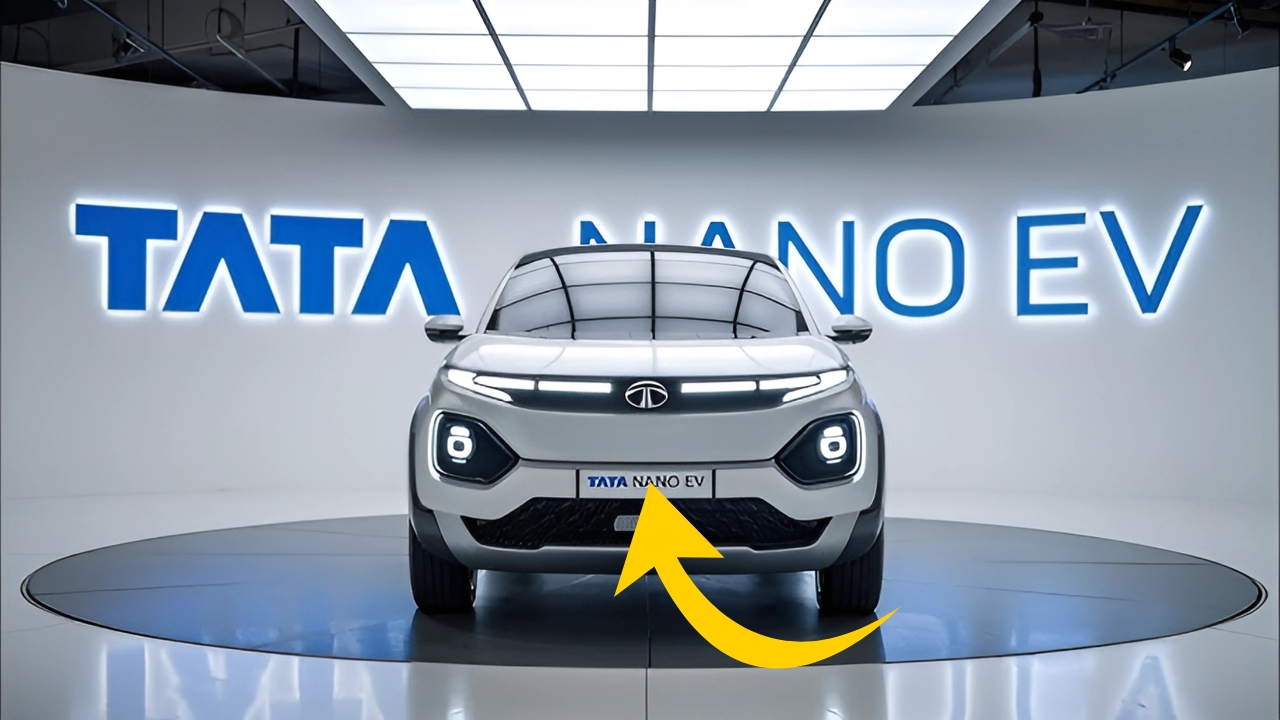Tata Nano EV : Tata Motors is set to make a surprising return of the iconic Nano nameplate, this time as a fully electric vehicle. This upcoming offering aims to defy expectations regarding its range, particularly for a vehicle of its compact size.
The Nano EV showcases a significant transformation from India’s traditionally celebrated “people’s car,” utilizing Tata’s advancements in electric vehicle technology. This shift positions the Nano EV as a strong contender in urban mobility, reimagining a classic for modern demands.
According to reliable sources, the Nano EV shares minimal mechanical characteristics with its predecessor, aside from its basic dimensions and intended purpose. The new iteration is constructed entirely as an electric vehicle, incorporating Tata’s proven Ziptron technology, which has already found success in models like the Nexon EV and Tigor EV.
An industry expert highlighted that, “This isn’t merely an electrified version of the original Nano. It’s a comprehensive rethinking that stays true to the core idea of accessible transportation while integrating the many benefits that electric powertrains provide for compact vehicles.”
One of the most remarkable features of the Nano EV is its expected range. Engineering professionals indicate that it will be capable of delivering around 250 kilometers of real-world range per charge, placing it favorably among affordable electric vehicles in its class despite its small stature. A sophisticated 21 kWh lithium-ion battery, constructed with updated cell chemistry from Tata’s battery technology partner, is behind this impressive range.
Tata Nano EV Urban-Focused Performance
The Nano EV will reportedly utilize a single electric motor that drives the rear wheels, mirroring the original Nano’s layout. It is expected to produce around 40 horsepower and 110 Nm of torque. While these power figures may initially appear modest, they signify a notable enhancement over the original Nano, providing brisk acceleration suitable for city driving, especially given the anticipated sub-750 kg curb weight.
Charging options include standard AC charging, which can restore the battery from 10% to 80% in roughly six hours with a home charger. Additionally, DC fast charging will allow the same charge in just 60 minutes, facilitating intercity travel with the correct planning and preparations.
According to Rajiv Sharma, a former engineer in Tata’s electric vehicle division, “The instant torque delivery renders it considerably more reactive than the original Nano. Coupled with a low center of gravity from the floor-mounted battery pack, the vehicle handles with remarkable stability and confidence.”
Tata Nano EV Contemporary Design with Nostalgic Cues
Spy shots of the Nano EV reveal that, while the dimensions remain compact, the design has undergone a substantial evolution to align with modern aesthetic preferences and current design trends from Tata. The overall shape continues to be tall and narrow, optimizing interior space, but incorporates more sculpted forms and contemporary details.
The front styling includes elements taken from Tata’s current electric vehicle range, featuring a closed grille area adorned with blue accents that signify its electric nature. LED lighting both front and rear enhances the impression of modernity, while the wheels have been increased to 14 inches in diameter, addressing past critiques regarding the original Nano’s smaller 12-inch wheels.
Inside, the instrument panel adopts a minimalist aesthetic, highlighted by a 7-inch touchscreen infotainment system. Physical controls for climate control remain, a practical touch for the Indian market. Furthermore, a digital instrument cluster supplies essential vehicle data, while materials and overall build quality appear to have received marked upgrades since the original Nano, addressing evolving consumer expectations.
Tata Nano EV Urban Mobility Solution with Practical Appeal
Tata has strategically branded the Nano EV as a practical solution for urban mobility rather than just an entry-level vehicle. The car will feature connected technology through Tata’s ZConnect app, facilitating remote charge status monitoring, cabin pre-conditioning, and geofencing capabilities.
Safety features include dual airbags, ABS with EBD, and electronic stability control — enhancements that were not present in the original Nano, emphasizing Tata’s focus on elevated safety standards across its offerings. Additionally, the vehicle boasts impressive efficiency, with energy usage reported at approximately 8.4 kWh per 100 kilometers, making it one of the most energy-efficient passenger vehicles available.
Such efficiency translates to exceptionally low operating costs estimated at around ₹1.20 per kilometer, which is about one-third the cost compared to petrol-powered alternatives.
Tata Nano EV Market Positioning and Timeline
Market positioning for the Nano EV suggests it will serve as the entry point into Tata’s expanding electric vehicle range, with anticipated prices starting at around ₹5 lakh following government incentives. This pricing strategy would render it significantly more economical than existing electric passenger vehicles, while still providing practical range capabilities for urban and suburban environments.
Production is slated to begin in the fourth quarter at Tata’s Sanand facility, with consumer availability expected early next year. Initial production capacity is targeted at 3,000 units per month, with potential adjustments based on market reception.
Vikram Patil, an automotive analyst, commented, “The timing appears perfect. With soaring fuel prices, a shift towards robust charging infrastructure, and rising ecological awareness, an affordably-priced electric vehicle with a practical range could gain substantial acceptance, especially as a supplementary vehicle for urban families or young professionals needing an efficient commuting option.”
